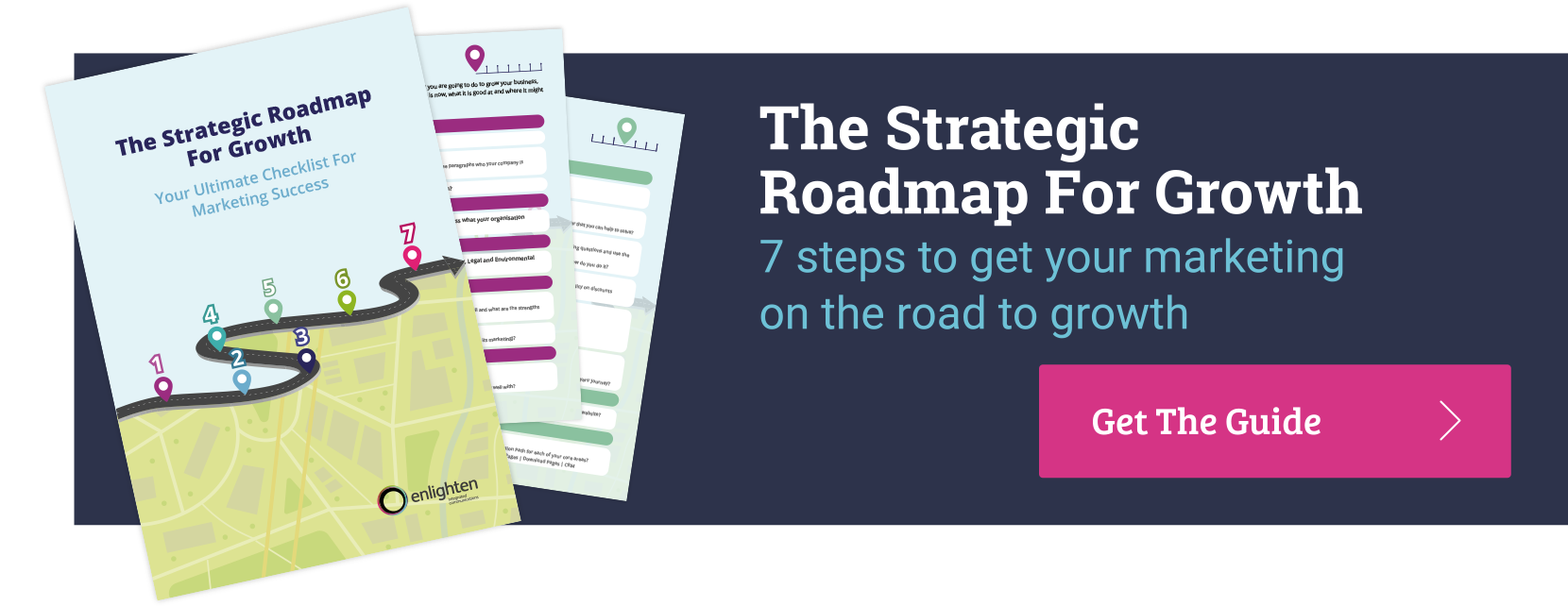
6 Steps To Planning A Successful Marketing Strategy For 2020
By John Hogg
Tags:
Marketing Strategy Marketing PlanIntroduction
Getting back to work in the New Year is often a drag. Christmas is but a distant memory and it might be several months until your next chance of a break. Added to this is the desire in most firms to look ahead and try to develop plans for their marketing teams to work on over the course of the year. Can it get any worse?
Now don’t get me wrong, I am a great believer in the power of developing a solid marketing plan, however, I also know just how tough it can be coming off the back of a busy campaign in the run up to Christmas; having a few nice days off with family & friends; and then having to cope with being back to work AND having to engage the grey matter so soon to develop a coherent and articulate marketing plan for the year ahead.
The good news is that in this blog I am going to share with you a simple six step model to keep you on the right path. Most experienced Marketers will already have their own planning processes and ways of doing things, although if you’re a switched-on marketer your antenna will most probably be permanently ON and you will always be on the look out for new ways of looking at things. This planning process is the first one I reach for everytime I need to develop a plan and it has served me well during the (very) many years I have used it. It is by no means a new model though and this approach was first developed by PR Smith in the 1990s. If you would like to find out more, please visit, https://prsmith.org/
So with no further ado, herewith our 6 Steps To Planning A Successful Marketing Strategy For 2020.
 1. Situation
1. Situation
No matter which text you read, a pretty fundamental first step in any planning process is to look at your current situation to understand your capabilities and the environment in which you operate before setting forth on your path towards World domination.
Take the time to understand your Strengths and Weaknesses. What gaps are there and how do they need to be filled? Do new services need to be developed, or perhaps some are not performing as they should? Do they need to be removed or require additional investment in order to succeed?
Similarly, what about your competition? What are their Strengths and Weaknesses? How do their capabilities stack up against yours? Next you will want to assess whether or not there are any Opportunities or Threats in the market for you so that you can begin to understand your capabilities and how they may be explored in order to achieve your goals.
This is only a snapshot of some of the areas you should look at when starting out with your plan. Make sure you do your homework and ensure your plan is built upon a solid foundation.
 2. Objectives
2. Objectives
Whilst it may sound obvious, no plan is complete without knowing what it is actually trying to achieve. To write a plan you need to have a clear understanding of the Objectives you are trying to achieve. Otherwise, you are simply drawing up a whimsical list of the things you feel like doing and without any real purpose.
Start with a high level Vision of where you would like your firm to be in a defined period of time and then percolate this down into a series of SMART Objectives which will help your firm to get there.
 3. Strategy
3. Strategy
Having assessed your current situation and determined where you would like your plan to take you, the next step is to devise the Strategies to get you there. This is where we would advocate trying to Segment your current market into a number of different groups. These groups may respond to different marketing tactics so it is worthwhile segmenting your market like this so that different campaigns can target specific audiences with specific messages which will resonate with them.
As part of this process it is also worth taking the time to develop an understanding of who your customers or clients actually are. What makes them tick? What do they like? Where do they go for information? What type of message resonates with them? What might they type into Google to find you? By understanding key characteristics such as these you can build detailed “Buyer Personas” and ensure that your future marketing efforts are focused on meeting their particular requirements.
We could go into a long list regarding how you should address developing your firm's Strategy. At the highest level Michael Porter argued that there were only three core strategies which an organisation could pursue. These include:
- Cost Leadership - setting your organisation apart with the cost of your product or service;
- Differentiation - trying to attract customers by finding some point of differentiation from your competitors; and
- Focus - following a niche strategy.
At a more day-to-day level, don't overlook the need to develop specific strategies for specific areas of your marketing. For example, when looking at your Marketing Communications Strategy make sure you devise ways to get your message to your chosen audience by developing strategies for each of the six main Marketing Ps:
- Product (or Service)
- Price
- Promotion
- Place
- People
- Process
 4. Tactics
4. Tactics
Tactics is very simply a list of each of the things you are going to do in order to deliver your Strategy and thereby achieve the Objectives of your firm. So, if you are planning to implement a successful Online Marketing Strategy you will need to have a number of Tactics in relation to your Website, Content, Traffic Generation (SEO, Social, Paid & Email), Lead Generation and Conversion into Clients.
It may be worth noting that whilst this blog is trying to provide a high-level overview of what a successful Marketing Plan needs to cover we have prepared a free guide which outlines all of these steps in a simple and easy to use Workbook. You can get your free copy of the Strategy Roadmap For Growth here:
 5. Action
5. Action
With all the hard work out of the way, it just needs to be pulled together into one coherent document which will inform everyone on how you plan to meet the objectives your organisation has tasked you to deliver. This Action Plan needs to specify what will be done, by when, by whom and how much it is expected to cost. Whilst developing your action plan this is also an excellent time to work out how you will report on each metric to ensure you can track performance throughout the year.
 6. Control
6. Control
As mentioned, in the previous point, it is imperative that you measure performance throughout the year and don’t leave it to a mad scramble at the end of the year to see if you’ve achieved your goals. Not only will the management team want to see how their investment in Marketing is working throughout the course of the year, you also want to find out as early as possible if something isn’t working so that you have time to fix it and get things back on track before it is too late!
In Summary
As you can see, taking a simple step-by-step approach to Marketing Planning can help to break things down into much more meaningful and achievable steps. I find this approach to be much easier to follow and makes things much less daunting as you work through the process. It is not too far away from the typical 4-step Strategic Planning Process which poses 4 simple questions:
- Where Are You Now?
- Where Do You Want To Be?
- How Are You Going To Get There?
- How Will You Know You Have Got There?
The only real difference with in our model we split ‘How Are You Going To Get There’ into both Strategy and Tactics, whilst ‘How Will We Know We Have Got There’ covers both Action Plans and Control.
As we have mentioned above, we have a useful Workbook which is available for free and will help you to shape your New Year planning activities. We also have a more detailed look at Planning for Law Firms in our “Guide To Writing A Strategic Marketing Plan For Growth”. This can be read online without the need to enter any details at the link below or you may decide to have a copy emailed to you for future reference.

Lastly, we wish you well in your planning endeavours. We hope we have provided you with enough food for thought and reference material in this blog. Having been there ourselves, we understand how difficult it can be, especially when returning in the New Year is making everything a bit ‘foggy’.
If you would like to discuss any aspects of your planning process which are causing you concern or you would like to find our about our ‘Done For You Service’, whereby we write your plan for you, please get in touch using the link below.

John Hogg
John is managing director of Enlighten IC and has been involved in legal marketing and technology marketing for over 25 years. He is passionate about how an inbound approach to marketing can help firms to drive leads and grow their business.
Get In Touch


